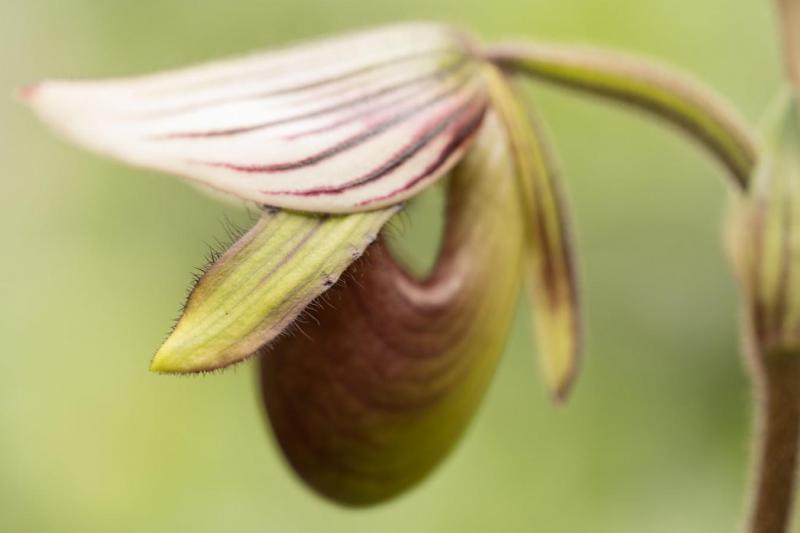Paphiopedilum lawrenceanum
Also known as: Lawrence's Paphiopedilum or Paphiopedilum lawrenceanum h.f. album Cypripedium lawrenceanum h.v. ardens Paphiopedilum lawrenceanum h.f. viride Cypripedium lawrenceanum h.v. viride Cypripedium lawrenceanum h.v. trieuanum Paphiopedilum barbatum ssp. lawrenceanum Paphiopedilum lawrenceanum h.v. trieuanum Paphiopedilum lawrenceanum h.v. viride Paphiopedilum lawrenceanum h.v. ardens Paphiopedilum lawrenceanum f. hyeanum Cypripedium lawrenceanum var. giganteum Cypripedium lawrenceanum var. hyeanum Cypripedium hyeanum Paphiopedilum lawrenceanum var. hyeanum Paphiopedilum lawrencianum Cordula lawrenceana in the subfamily: Cypripedioideae
General Information
Lawrence's Paphiopedilum is a small hot growing lithophytic or terrestrial orchid belonging to the sub family Cypripedioideae. It is named after the English Orchid Enthusiast in the 19th century.
Plant Description
Grows to 40cm. Each new growth has numerous elliptic leaves that grow to 4-20cm long
Flowers
Numerous blossoms appear during Spring
Blooming Season
- Spring
Substrate(s)
- Coarse
- Spaghnum Moss
Care Notes
These orchids like to be watered regulary, especially during warm weather, and prefer a well draining mix or also do well mounted, provided they can be watered daily or even many times a day.
These are quite a forgiving orchid, there are no special requirements to get this orchid to flower, just good care and consistent conditions. Larger plants may be more fussy and can react poorly to change; a poorly timed repotting, a pest infection or an unusually hot day can set them back for a couple of years. However, even plants that have been treated poorly can thrive, and if they are set back they often recover much stronger then they would otherwise be.
Climate
Grows at low to high elevations. Rainfall ranges from 112mm to 427mm per day, heaviest in January and lightest in April. Humidity ranges from 81% to 86%, highest in January and lowest in July. Temperature ranges from 21C to 29C, highest in April (22C to 29C) and lowest in January (21C to 28C).
Watering
These orchids prefer a wet-dry cycle between waterings, they should be watered frequently but only when the moisture is approaching dryness, where the pot feels light and/or the media looks dry. Keep an eye on mounted orchids in warm weather as they may dehydrate quickly.
Fertiliser
These orchids do not need to be regularly fertilised and roots may be sensitive to salt build-up, dying back and therefore impairing the plants growth or even killing it.
If fertilising, use half to quarter of the recommended amount of fertiliser. If they receive fertiliser as part of a collection, be sure to flush out the pots regularly with fresh water and monitor the roots by checking how much resistance is given by the plant when nudged in its pot or mount. If the plant becomes wobbly or loose, repot in fresh mix or rinse the media/mount thoroughly and do not fertilise for at least 3 months.
Be sure to flush out excess fertiliser by running water through the media regularly year round. Use a high Nitrogen fertiliser year round. Use a high Phosphorous fertiliser year round.Potting
These plants can be sensitive to repotting though should not require repotting regularly. Repotting should be done when the mix has broken down to the point that it doesn't absorb water or holds onto water for far too long, usually the plant shows a decline in growth as well.
The mix should be free draining, with a blend of 30% inorganic ingredients such as coarse sand, gravel or perlite, mixed in with about 70% organic ingredients such as peat, leaf litter or decomposed bark. Avoid commercial potting mixes as they can vary wildly and may contain "wetting agents" that can hold onto water for loo long, causing rotting and stunted growth.
Repotting is best done annually.














